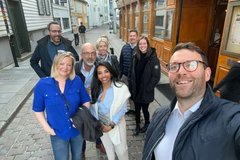Who wants to be an engineer? From the UK to Brazil, teams expand an in-school program to help girls find their STEM tribe and flourish.
Imagine yourself back at school aged 11 or 12. You discover you love math and science. Solving problems, calculating outcomes, constructing robots, enquiring about the properties of electricity. For you, these activities are super engaging and fun. But, when you ask your closest friends to join the school’s STEM club with you, they are not as keen. They think STEM subjects are a bit nerdy, and you feel a bit isolated.
This is a real scenario for many young women. Early high school is a critical time when students begin taking courses that will shape their future careers. However, many girls are swayed away from science, technology, engineering and mathematics – perhaps by the lack of a like-minded cohort, or by the opinions of their friends and a need to belong. Some research has tried to identify the reasons behind this outcome. One potential explanation for lower STEM enrollment is a gender difference in students’ beliefs about their ability in these subjects. Other ideas include levels of academic skills and preparation, social and family background and expectations, or tastes.
Kimberley (Kim) Larham, now Baker Hughes’ Chemicals Supply Chain Optimization Leader, set out to change that.
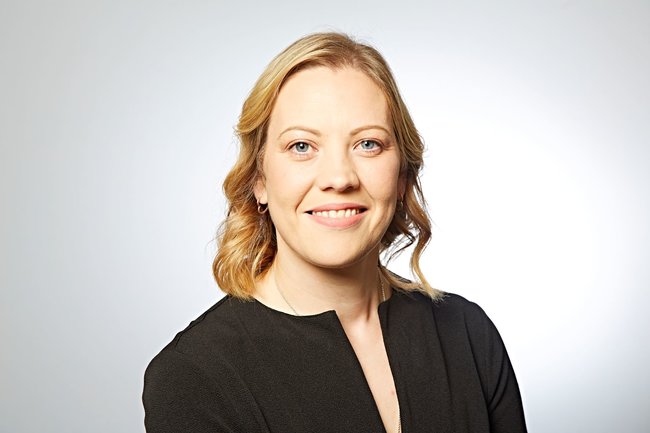
In 2010, while working for GE in the UK, Kim established the GirlsGetSET program (SET stands for Science, Engineering and Technology), a volunteer-run organization that aimed to change the way that girls in the U.K. experience STEM during this pivotal time of their lives. Since then, the program has expanded to the U.S. and Italy and helped more than 12,000 girls embrace STEM education and the exciting careers that follow.
Today’s GirlsGetSET program is 12 or 24-months and combines online interactions, face-to-face mentoring from women with careers in STEM, and hands-on projects in all-girl group environments. The curriculum culminates in a graduation event known as “Girls’ Day” that helps solidify a sense of belonging among STEM-minded girls.
In the coming months, the program is set to expand to Brazil where Baker Hughes customer Petrobras has asked to partner on its introduction to the country. It is also due to expand to Saudi Arabia in the future.
“We’ll start small because we know the program can have a huge impact, and we want to get it right before expanding into these new countries where we need to work with new cultures,” says Kim, who is now based in the U.S.‘’As a volunteer-run program, GirlsGetSET also requires a substantial commitment from its leaders, mentors and organizers, so it can take a little while to build up the numbers of passionate hands on deck’’ she adds.
Doesn’t every girl want to be an engineer?
Kim didn’t realize until she got to university that her upbringing wasn’t typical. She recalls her father, an engineer, using rulers and bricks to demonstrate the forces and physics that govern safe bridge building. With their home life teaching them to think about the world differently, Kim and her brother, Paul, decided to become engineers. However, when Kim went to Staffordshire University in the UK to study Forensic Engineering (the investigation of failures in machines, components, materials or structures), she was the only woman in an intake of 50. Later, when she joined GE Aerospace in the UK as a systems safety engineer, she was one of two women in an intake of 17 engineers employed in 2008.
“The gender imbalance was clearly demonstrated in my early career experiences. I couldn't understand why it existed, because engineering had always been a good thing for me and I thought that must also be true for other young women,” says Kim, who worked for GE in various roles, until its Oil & Gas division merged with Baker Hughes in 2017.
Back in 2008, she and her colleague, Sophie Kirkland, were astounded at the lack of women in their engineering environment. So, they began volunteering at local schools to try to encourage more young women to channel their STEM interests. At first, they held project-building events for both girls and boys, but, says Kim, “There were always more boys, and the boys very much led the activity, while the girls tended to stand back.”
They decided to try working only with groups of girls.
“The energy in the room was completely different!” says Kim. “The girls got stuck in, they ripped everything apart – it was brilliant. We decided we had to harness that and created a program with an atmosphere where girls really can be whoever they are; where they're not influenced by other things going on in the room.”
The wonderful web of STEM career paths
Since June, Maria Claudia Borras, Executive Vice President of Baker Hughes’ Oilfield Services and Equipment, is now the Executive Sponsor of GirlsGetSET in the company.
With a Bachelor of Science in Petroleum Engineering from Bogotá, Colombia, and her leadership role at Baker Hughes, Maria Claudia is a role model for aspiring engineers. Borras is excited that “GirlsGetSET provides excellent first exposure to the honorable, exciting, and fulfilling careers [that young women] can have in energy.”
The volunteers who help deliver the program have varied careers, and a broad range of roles related to STEM. As Supply Chain Optimization Leader for the Chemicals product line, Kim works on driving change to improve the company’s operations and processes. Her career trajectory so far — in aerospace, oil and gas technology development and now supply chain – exemplifies the exciting range of roles open to all engineering graduates.
Margaret Pang, an alumna of the program is now a Software Tools Engineer with GE Aerospace. She says the program introduced her to the possibilities of working with a multinational STEM-based company. Her current remit is in designing tools that simulate and test the work of engineers who are designing new aerospace parts and products. Her work aims to reduce errors and improve design efficiency.
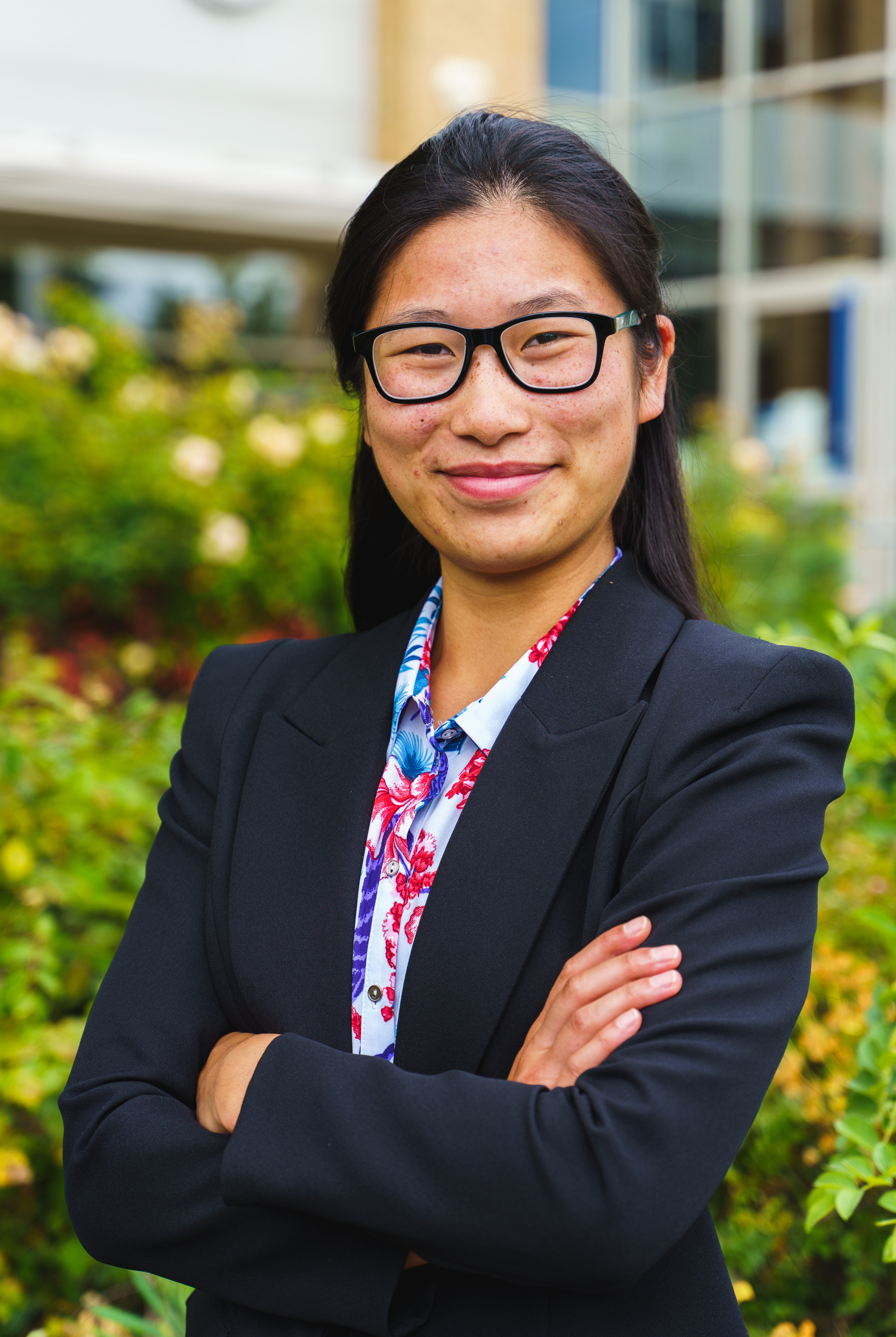
Deconstructing stereotypes
When Margaret started high school, she had an image of an engineer wearing overalls and a hard hat with a hammer or spanner in hand. “That’s not what an engineer was then, and it isn’t what an engineer is now, but it was a stereotype I had in mind,” she says. She wants to help change any uninformed impressions girls might have, “because engineers are so much cooler than that and STEM is so much wider than engineering.”
Kim ran the very first GirlsGetSET program at Margaret’s high school, sending mentors to campus and posing real world problems for the girls to solve. The girls were then encouraged to design a solution, build a prototype and present their work, along with projected costs, to the group.
“The first project we did was to create a rain catcher for a developing country. We designed an elephant doing a handstand, with an open top to catch the water, and then its trunk was the tap for people to get that water out. To my mind, it was such a great idea,” says Margaret with a huge grin.
The Girls Day at the end of the school year was the pinnacle of her experience. Held at one of the company’s sites, it included all the students from schools the program had worked with in the area and was set up to allow them to interact over a multitude of projects and demonstrations.
“I realized that there were lots of girls based locally who were interested in the same things I was interested in, which was amazing to me and gave me a real sense of belonging.” Margaret would go on to do a work placement at GE Aerospace, and then joined its engineering degree apprenticeship. As part of the degree program, apprentices would volunteer for STEM outreach events.
“Obviously I was most passionate about GirlsGetSET!” says Margaret, who volunteered as a mentor and also set up event days. By the third year of her apprenticeship, she was leading the program for her local site and went on to help other sites and partner companies to run it.
GirlsGetSET in action!
Kim says Margaret provided her first personal example of the program’s encouraging success. The two met by chance during Margaret’s degree apprenticeship. Margaret approached Kim and said, “I remember you from the first Girls’ Day.”
“At that point, the penny dropped that not only had Margaret picked a STEM career, but she’d also picked a career with us because of all our wonderful volunteers,” says Kim. “I realized that we weren't just changing girls’ opinions and nurturing their strengths; they were actually making life decisions because of what we were sharing with them.”
Today, at Lewis Girls' School in Wales, GirlsGetSET has been running for almost three years, and is delivered through both virtual and in-person interactions. Matt James, who leads the school’s design and technology stream, says the program complements a curriculum that is increasingly oriented towards career opportunities. ‘’The opportunity for pupils to hear about different roles in STEM and what the volunteers love about their work, helps them imagine a range of career focused futures’’ he adds.
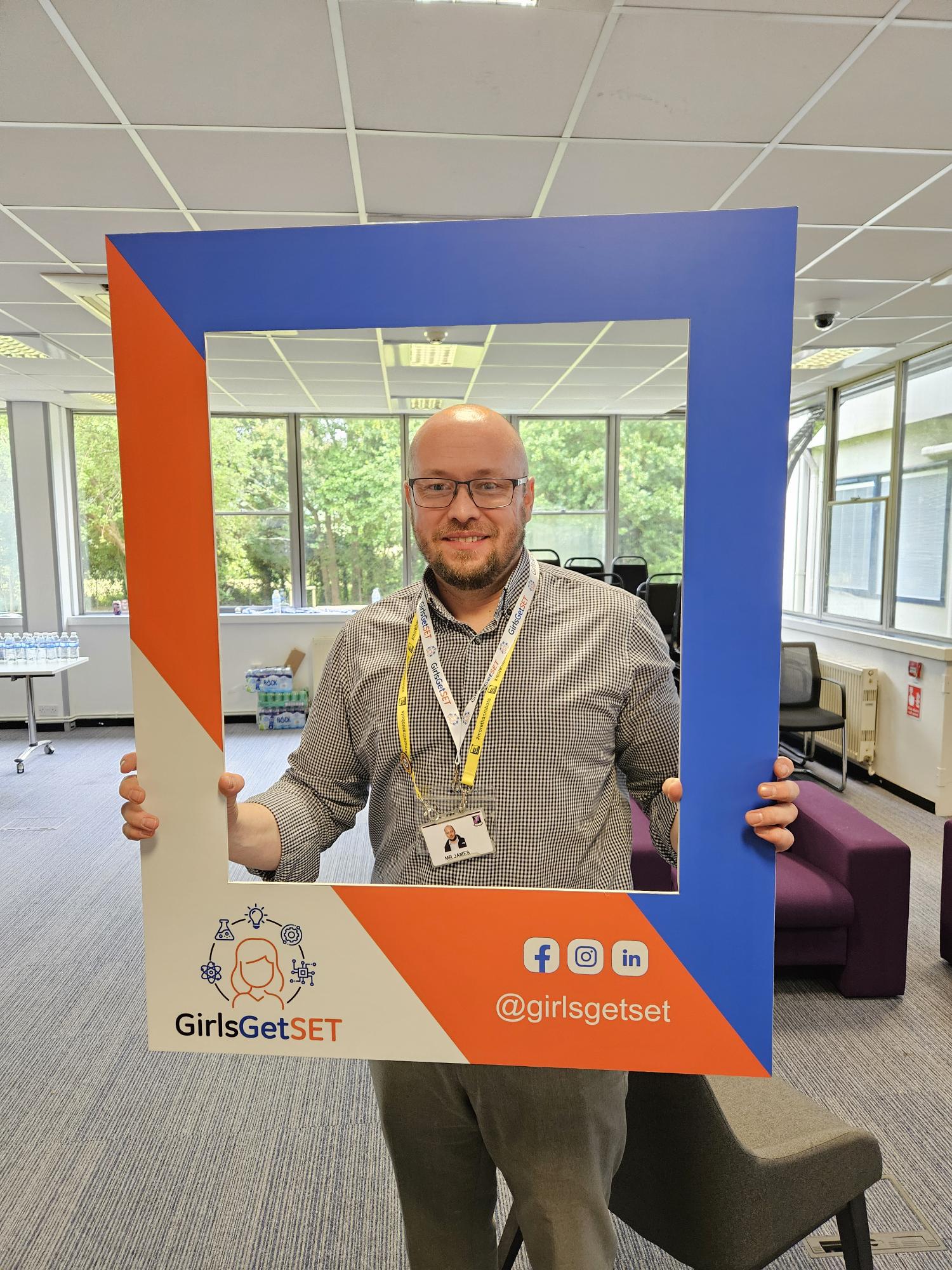
Matt explains that the girls gravitate towards the program’s hands-on projects. “This year we ran an event day, where loads of volunteers from Baker Hughes came in and supported the girls to design and evaluate a carbon transport vessel that could carry captured carbon to the point of sequestration,” Matt says. “The girls loved responding to a real-world problem and working with people from outside the school environment.”
Matt also reports that at parent-teacher days, the parents were commenting on their daughters’ enthusiasm. They had been talking at home about different STEM jobs they’d heard about at school. They excitedly told their parents how Christmas trees are not just of the fir variety on which you hang decorations, but also massive pieces of equipment that control the flow of oil and gas from subsea wells.
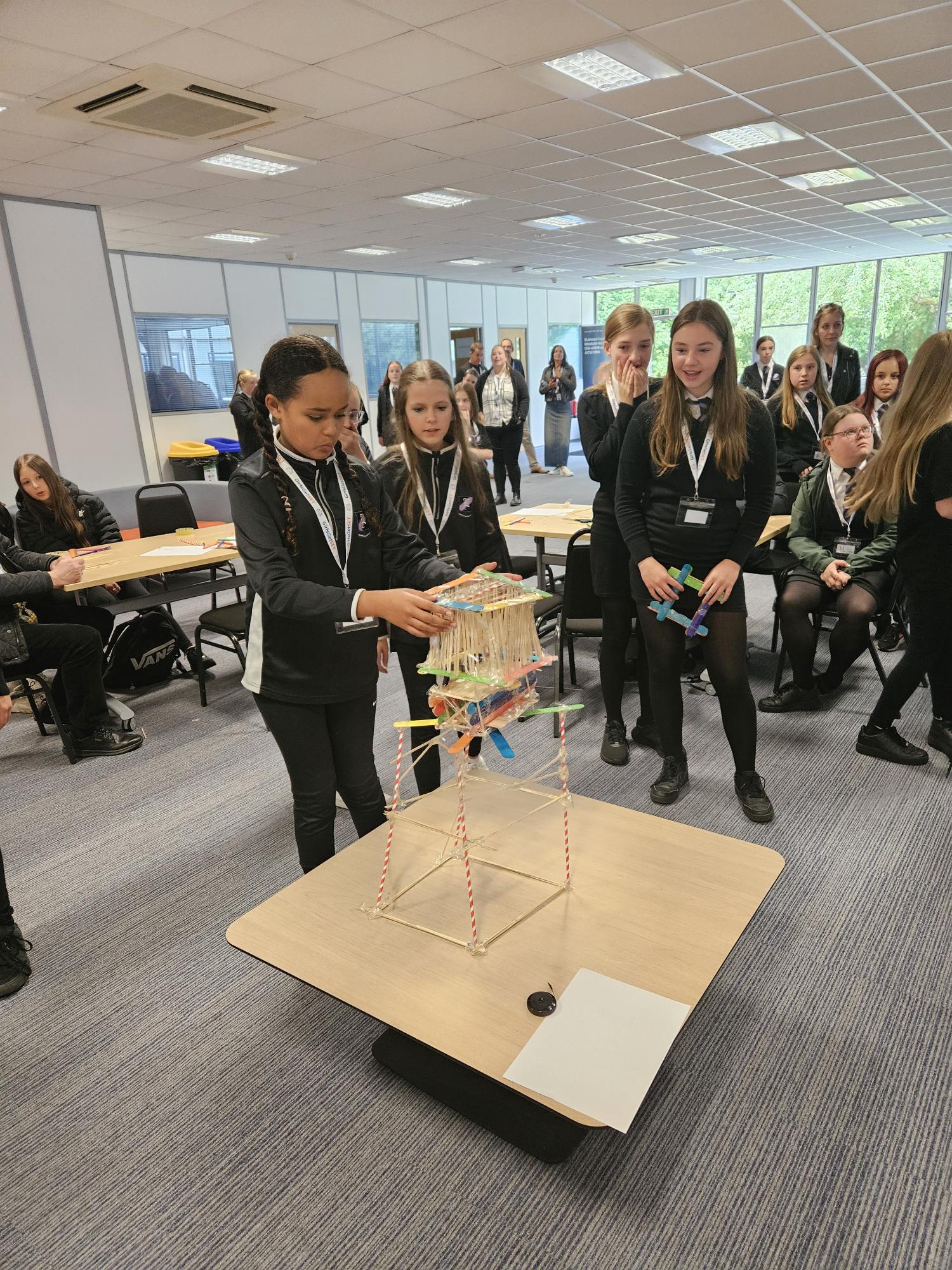
“It’s nice to see that some of the girls are going home and talking to their families about what they've done, jobs they’ve heard of, and some very specialized engineering equipment. It shows the program is having the impact that we were hoping for,” says Matt.
Imagine you’re a girl, aged 12, and you learn to love STEM subjects…
Kim says she’s learned a lot about girls’ developmental stages and how their self-esteem and confidence changes in that period.
With companies such as Baker Hughes committed to workforce diversity, one might think that the opportunities would encourage young women to follow their interest in STEM. “People say, ‘The world’s your oyster. You can achieve whatever you turn your mind to — there are no limits!’” says Margaret. “In society, there are still pressures and it can be really difficult.”
Because she discovered the value of following her dream to work in STEM, Margaret, like every program volunteer, wants to help others realize their potential in a field that she calls “varied, fun, cool and exciting.”
Kim is thrilled about the growth of the program into other regions of the world, and excited to be launching career events for the daughters of Baker Hughes employees and customers.
“We're doing things that we've never done before, and I'm excited because it will bring more people into the fold. There is nothing I love doing more than talking about the program for 20 minutes over a coffee, throwing ideas around about how we can do things differently, and seeing the spark of passion for the brand ignite in other people.”
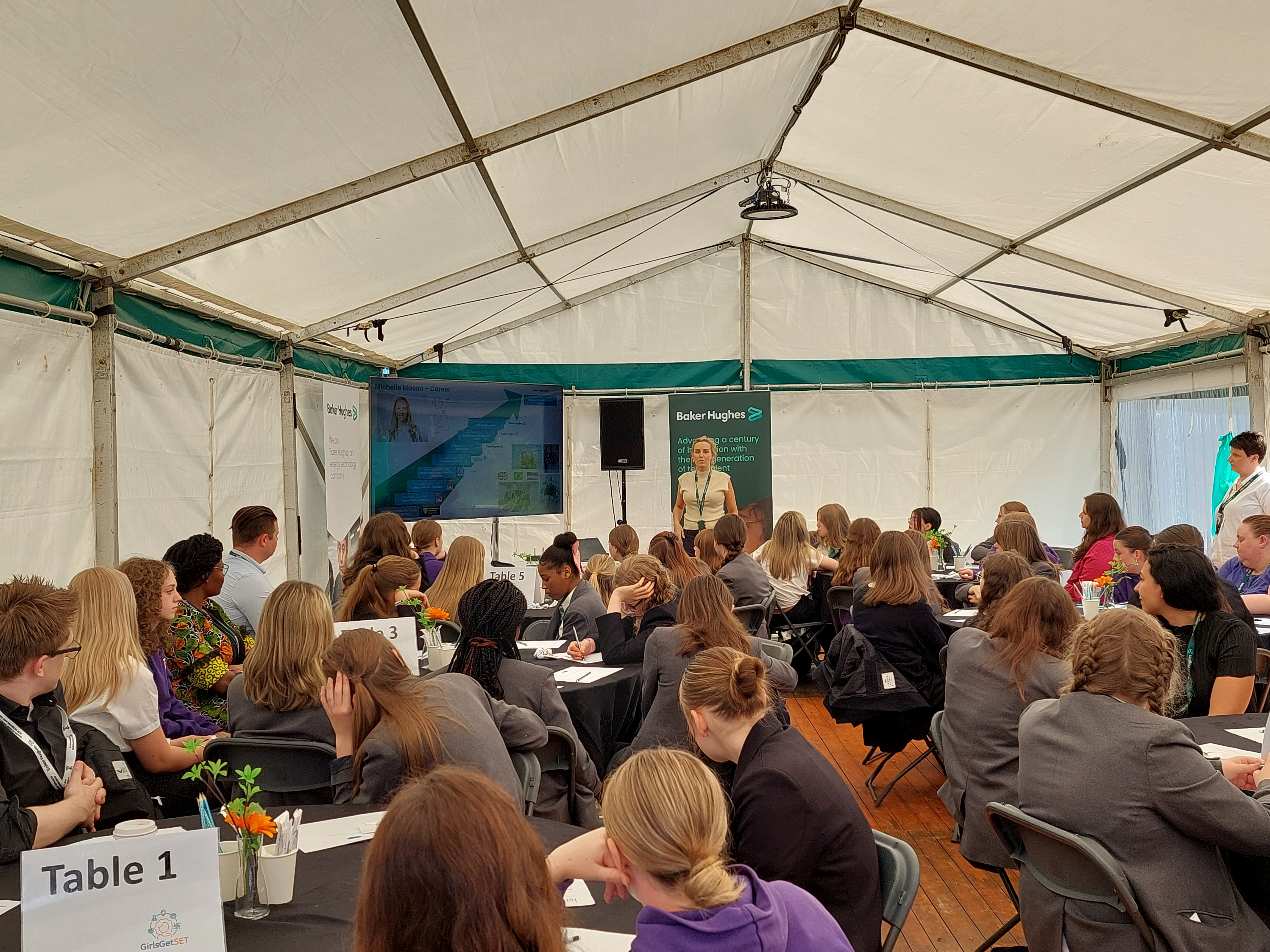
Energy Forward Stories
Sign up to stay up to date on the latest innovations and people shaping the future of our industry.




